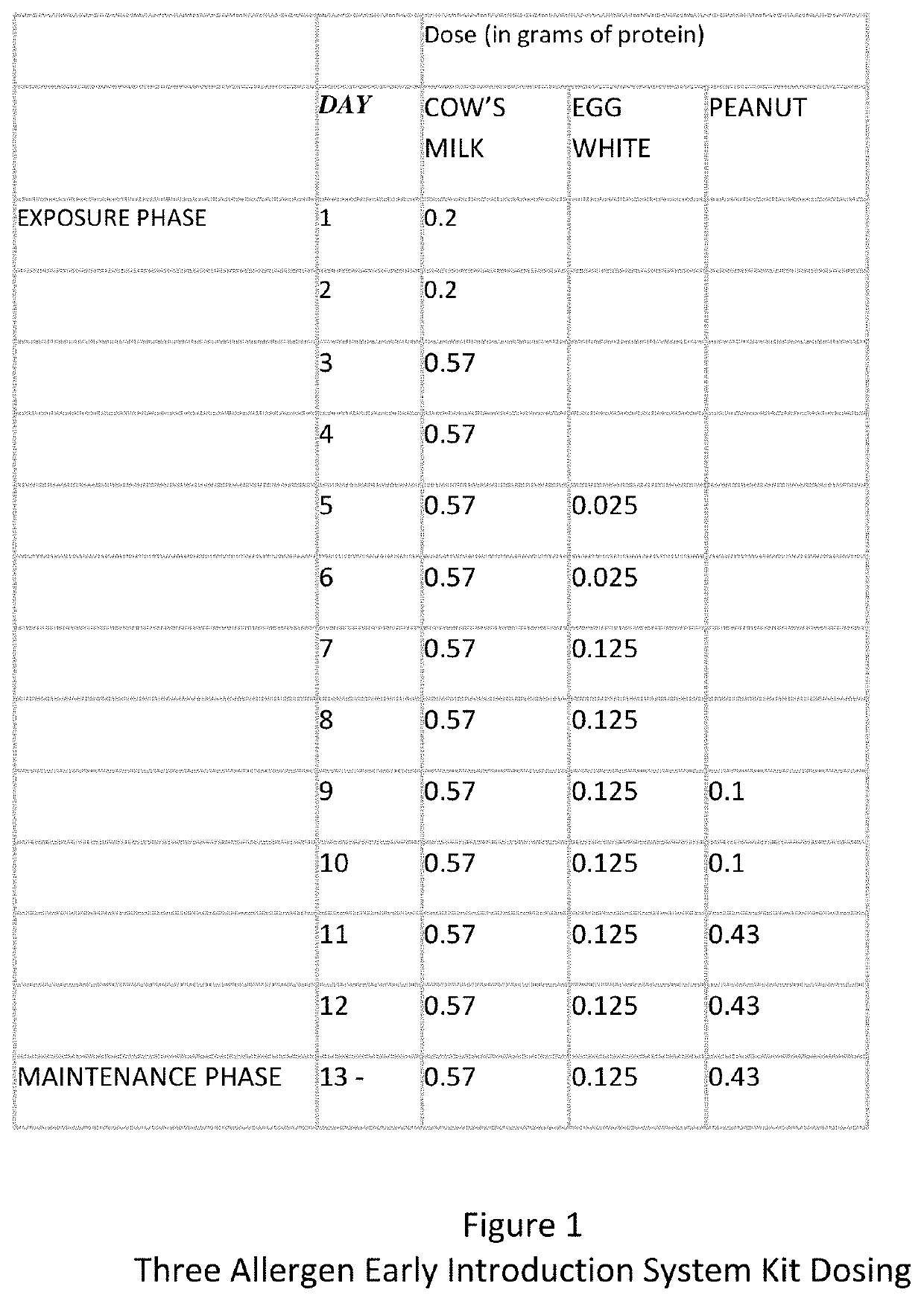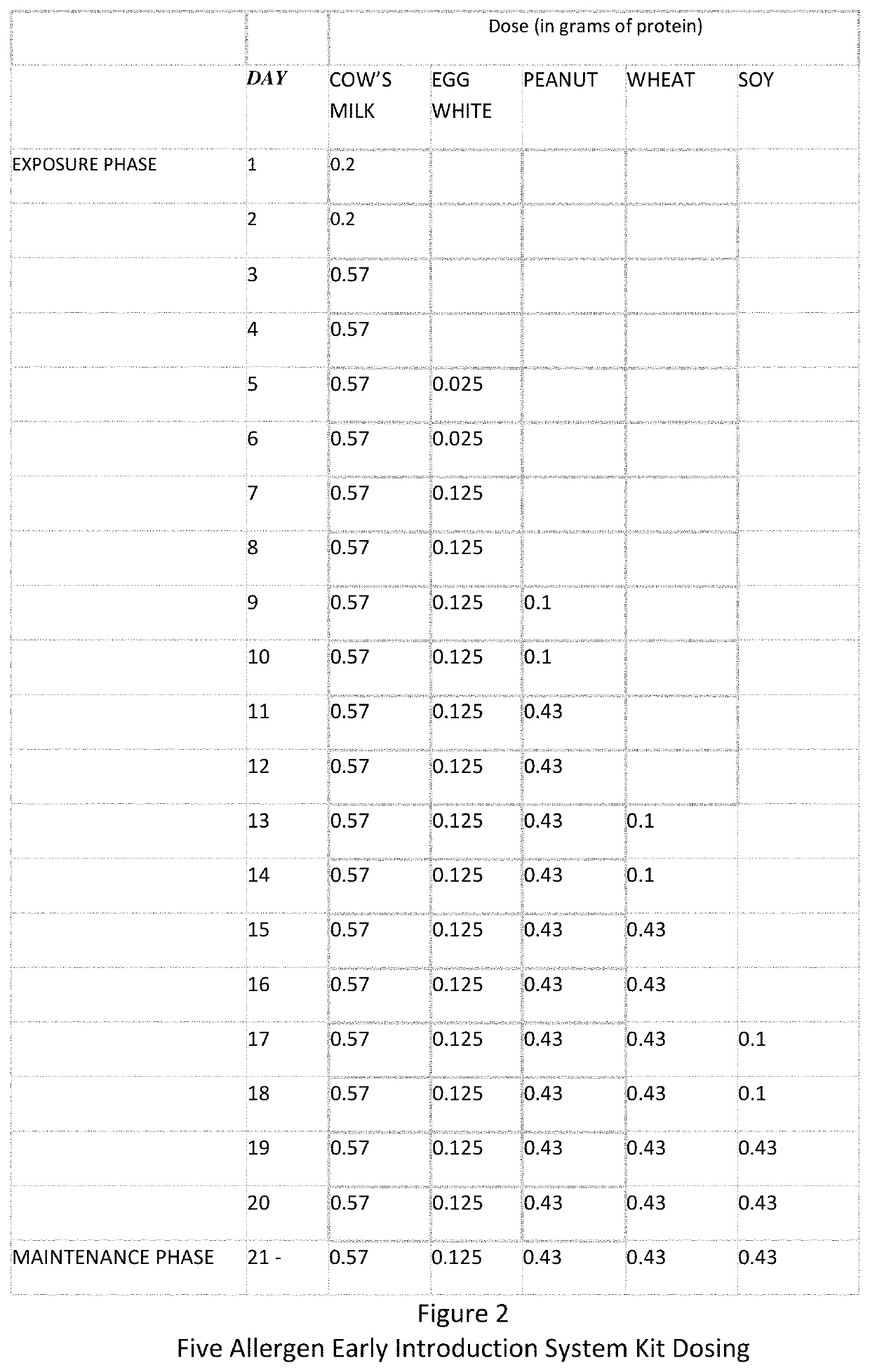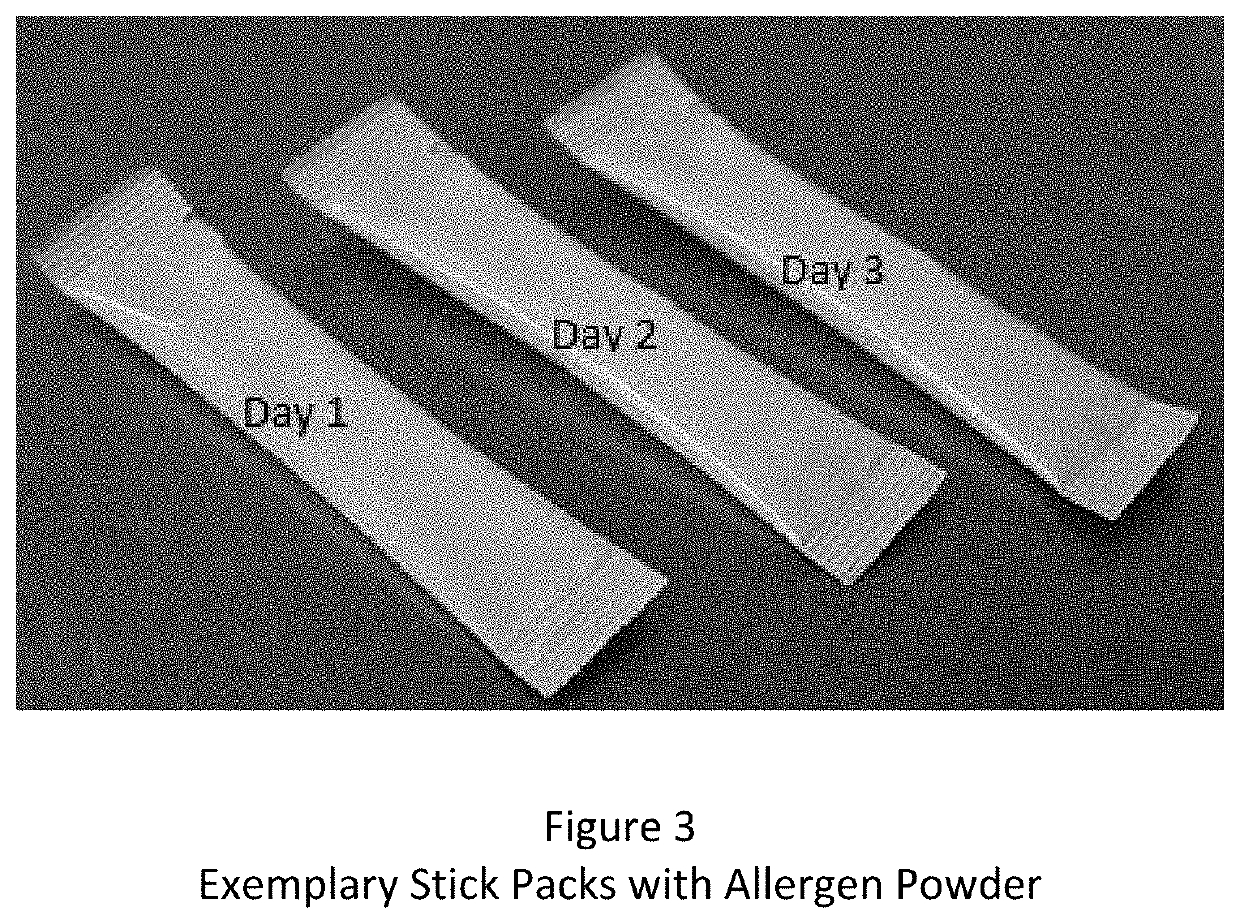Composition and method for reducing allergic response
a technology of allergic response and composition, applied in the field of allergens, can solve the problems of increasing the incidence of food allergy, migrants appear to acquire the incident risk of their adopted country, and alone cannot explain
- Summary
- Abstract
- Description
- Claims
- Application Information
AI Technical Summary
Benefits of technology
Problems solved by technology
Method used
Image
Examples
Embodiment Construction
[0023]The invention is a ground-breaking solution to the difficulties infant caretakers face with early food introduction for infants. It is a dietary supplement aimed at broad adoption and a substantial reduction of food allergies on a population level. This supplement, a powder that mixes easily with breast milk or formula or in infant foods, includes “culprit allergens” from the foods most commonly associated with childhood food allergy. Made from the powder of natural foods, the daily dose regimen has been formulated specifically to promote the development of tolerance via the gastrointestinal system. While it is impossible to prevent all reactions to food, our dosing regimen is specifically designed to ensure that reactions are mild and identified early, if they occur. In addition to the evidence-based dose escalation noted above, another innovative feature involves sequential introduction of food allergens.
[0024]Through easy-to-follow daily use with breastmilk or formula, star...
PUM
| Property | Measurement | Unit |
|---|---|---|
| particle size | aaaaa | aaaaa |
| time | aaaaa | aaaaa |
| size | aaaaa | aaaaa |
Abstract
Description
Claims
Application Information
 Login to View More
Login to View More - R&D
- Intellectual Property
- Life Sciences
- Materials
- Tech Scout
- Unparalleled Data Quality
- Higher Quality Content
- 60% Fewer Hallucinations
Browse by: Latest US Patents, China's latest patents, Technical Efficacy Thesaurus, Application Domain, Technology Topic, Popular Technical Reports.
© 2025 PatSnap. All rights reserved.Legal|Privacy policy|Modern Slavery Act Transparency Statement|Sitemap|About US| Contact US: help@patsnap.com



